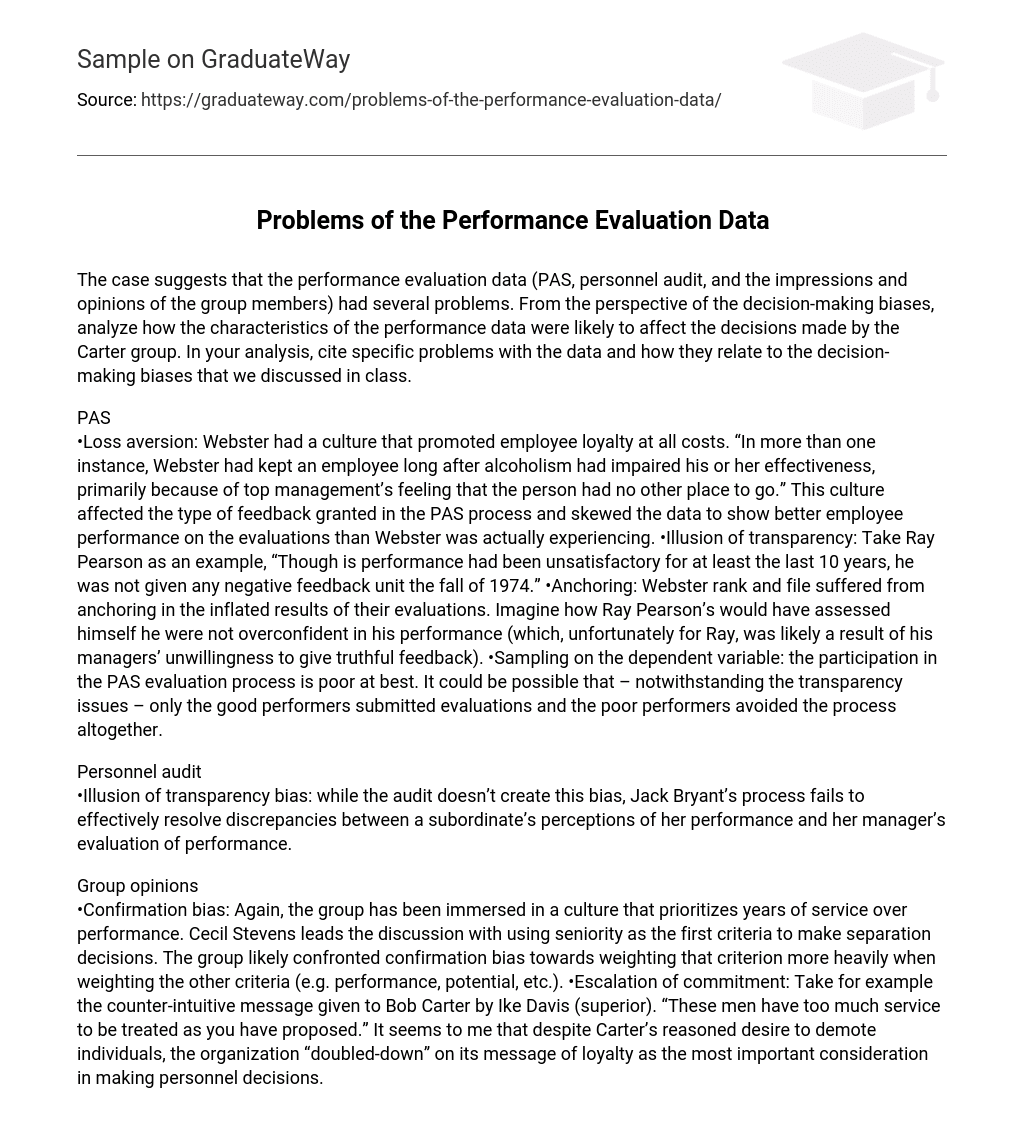In this case, it is evident that the performance evaluation data (PAS, personnel audit, and the impressions and opinions of the group members) had multiple issues. To understand how these characteristics of the performance data potentially influenced the decisions made by the Carter group, we will analyze them considering decision-making biases discussed in class. It is important to identify specific problems with the data and establish their connection with the decision-making biases.
- Loss aversion: Webster had a culture that promoted employee loyalty at all costs. “In more than one instance, Webster had kept an employee long after alcoholism had impaired his or her effectiveness, primarily because of top management’s feeling that the person had no other place to go.” This culture affected the type of feedback granted in the PAS process and skewed the data to show better employee performance on the evaluations than Webster was actually experiencing.
- Illusion of transparency: Take Ray Pearson as an example, “Though is performance had been unsatisfactory for at least the last 10 years, he was not given any negative feedback unit the fall of 1974.”
- Anchoring: Webster rank and file suffered from anchoring in the inflated results of their evaluations. Imagine how Ray Pearson’s would have assessed himself he were not overconfident in his performance (which, unfortunately for Ray, was likely a result of his managers’ unwillingness to give truthful feedback).
- Sampling on the dependent variable: the participation in the PAS evaluation process is poor at best. It could be possible that – notwithstanding the transparency issues – only the good performers submitted evaluations and the poor performers avoided the process altogether.





